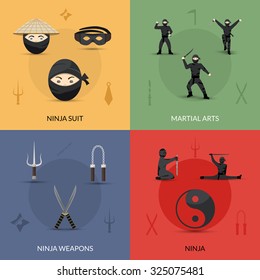The History And Approach Of Martial Arts: A Deep Dive
The History And Approach Of Martial Arts: A Deep Dive
Blog Article
Short Article By-Rafferty Barbour
Enter the old world where martial arts were substantiated of necessity in varied areas. Cultures crafted distinct battling styles linked with historic contexts. Techniques progressed over centuries with devoted technique and cultural exchanges. Today, contemporary martial arts mix typical aspects for maximum effectiveness. Philosophically, martial arts stress self-control, self-improvement, and consistency. Regard, humility, and equilibrium are fundamental concepts assisting practitioners in the direction of growth and durability. Explore the depths of this rich background and philosophy to uncover the profound influences forming this long-lasting technique.
Origins of Fighting Style
Fighting style came from numerous areas around the world, developing as useful fight systems to defend against hazards. These ancient battling styles were created out of need, with each society crafting methods fit to their distinct settings and difficulties. From the grappling arts of Jujutsu in Japan to the striking methods of Kung Fu in China, martial arts were deeply intertwined with the historic, social, and social fabric of their corresponding cultures.
In Japan, the samurai course refined martial arts like Kenjutsu, the art of the sword, which later developed right into the extra promoted form of Kendo. On the other hand, in Brazil, Capoeira emerged as a mix of dancing and battle, produced by enslaved Africans as a means to withstand injustice. Each fighting style brings with it an abundant background and viewpoint, reflecting the worths and beliefs of individuals who exercised them.
As you delve into the beginnings of martial arts, you uncover a tapestry of human resourcefulness, durability, and the unyielding spirit of warriors throughout time.
Evolution of Methods
Through centuries of practice and improvement, combat methods within different martial arts have undergone a profound development. From mouse click the next web site like Kung Fu and Karate to a lot more modern self-controls such as Brazilian Jiu-Jitsu and Krav Maga, the development of methods has actually been driven by a mix of social influences, sensible applications, and technical innovations.
One considerable aspect of this development is the cross-pollination of techniques in between various martial arts. For instance, techniques from conventional Japanese Jiu-Jitsu were integrated right into the production of Judo by Jigoro Kano in the late 19th century. This mixing of designs has actually led to the growth of hybrid martial arts like Mixed Martial Arts (MIXED MARTIAL ARTS), which incorporate aspects of striking, grappling, and entry strategies.
Furthermore, the evolution of strategies has actually been shaped by the increasing focus on performance and performance in combat. Experts have actually continuously looked for to fine-tune their techniques with rigorous training, experimentation, and competition, bring about the development of very specialized and reliable combating styles. Generally, the advancement of methods in martial arts shows the vibrant nature of combat and the recurring mission for enhancement and innovation.
Philosophical Foundations
Discovering the underlying philosophical principles of martial arts gives understanding right into their core values and leading beliefs. At the heart of several martial arts techniques is the concept of self-control itself. By training your mind and body to serve as one natural device, you cultivate technique that prolongs past the dojo or health club into day-to-day life. This self-control encompasses regard, humility, and self-constraint, shaping not just your physical abilities however likewise your character.
https://www.reuters.com/lifestyle/musk-will-train-if-las-vegas-martial-arts-cage-match-takes-hold-2023-06-24/ in martial arts is the idea of continuous self-improvement. The journey of understanding a martial art is endless, with experts frequently striving to better themselves, both literally and mentally. This concentrate on growth fosters resilience, determination, and a growth attitude that can be put on all facets of life.
In addition, martial arts highlight the value of harmony and equilibrium. Techniques are created to utilize a challenger's power versus them, highlighting the principle of producing and redirecting force as opposed to fulfilling it head-on. This ideology extends to social partnerships, promoting peaceful resolutions and mutual understanding. By embracing these thoughtful foundations, martial musicians not only boost their fight abilities but likewise grow a way of life centered on personal growth, regard, and consistency.
Conclusion
Finally, the background and ideology of martial arts offer an abundant tapestry of tradition, discipline, and self-improvement.
Take for example the tale of Bruce Lee, that revolutionized martial arts by mixing different styles and approaches to develop his own unique form of Jeet Kune Do.
Through devotion and technology, martial artists continue to press borders and influence others to reach their full potential both in battle and in life.
